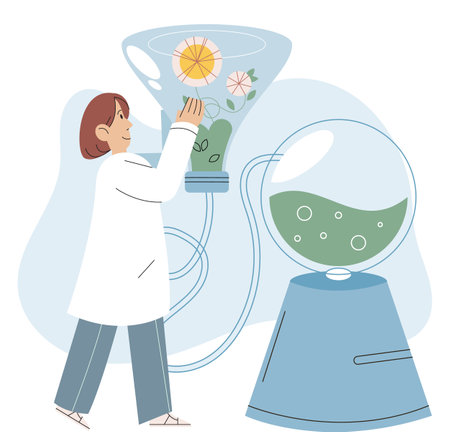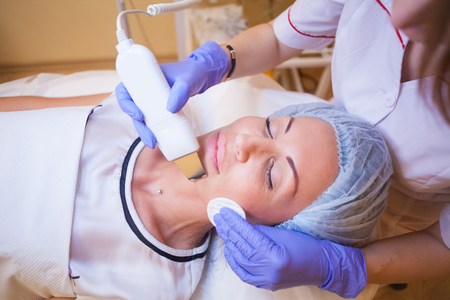1. Introduction to Laser Skin Resurfacing
If you’ve ever scrolled through Instagram and wondered how some people have such smooth, flawless skin, there’s a good chance laser skin resurfacing played a role. This popular cosmetic treatment has become a go-to for Americans who want to look younger, reduce fine lines, or even out their skin tone—without going under the knife. But what exactly is laser skin resurfacing, and why is everyone talking about it?
Laser skin resurfacing is a non-surgical procedure that uses concentrated beams of light (lasers) to remove old or damaged layers of skin. By targeting the surface and sometimes deeper layers, it encourages the body to produce fresh collagen—a protein that keeps our skin firm and youthful. The result? Smoother, tighter, and more radiant skin.
Why Are Americans Choosing Laser Skin Resurfacing?
There are plenty of reasons why this treatment has taken off in the U.S., especially among those looking for real results without major downtime. Check out some of the top reasons:
| Reason | What It Means for Consumers |
|---|---|
| Non-invasive | No surgery required; less risk and quicker recovery |
| Customizable | Treatments can be tailored to different skin types and concerns |
| Visible Results | Smoother texture, fewer wrinkles, improved pigmentation |
| Minimal Downtime | Most people can return to daily life within days |
The American Perspective on Beauty Treatments
In the U.S., there’s a strong focus on self-improvement and maintaining a youthful appearance—especially with so much emphasis on social media presence. Laser skin resurfacing fits right into this mindset because it offers noticeable improvements without drastic changes or long recoveries. Whether it’s prepping for a big event, feeling more confident at work, or just wanting your outside to match how young you feel inside, this treatment has become a staple in many Americans’ skincare routines.
2. Early Days: The First Generation of Laser Treatments
CO2 and Erbium Lasers: How They Worked
When laser skin resurfacing first became available, the CO2 (carbon dioxide) laser and the Erbium laser were the main players. Both of these lasers use concentrated beams of light to remove layers of damaged skin, which helps reveal fresher, younger-looking skin underneath.
CO2 Lasers
CO2 lasers use a high-energy beam to vaporize the outer layers of your skin. This process can target deep wrinkles, scars, and other imperfections. It’s very precise, but it also means more intense results—and sometimes more intense side effects.
Erbium Lasers
Erbium lasers work in a similar way but are generally less aggressive than CO2 lasers. They’re great for treating fine lines and moderate skin issues. Because they don’t go as deep as CO2 lasers, recovery time is usually shorter and there’s less risk of side effects.
Benefits and Challenges of First-Generation Lasers
| Laser Type | Main Benefits | Main Challenges |
|---|---|---|
| CO2 Laser | – Effective for deep wrinkles – Can treat severe sun damage – Long-lasting results |
– Significant downtime (up to 2 weeks) – Redness and swelling – Risk of scarring or infection |
| Erbium Laser | – Good for fine lines – Shorter downtime than CO2 – Less risk of side effects |
– May not be strong enough for deep wrinkles – Still some redness and peeling – Multiple sessions may be needed |
What Patients Experienced Back Then
If you talked to someone who had laser resurfacing in the early days, they’d probably tell you about needing up to two weeks off work just to heal. Skin would be red, swollen, and sometimes even oozing during the first part of recovery. The results could be amazing—smoother skin, fewer wrinkles—but people really had to weigh those benefits against the long healing process and possible side effects like infection or scarring.

3. Modern Innovations: Fractional Lasers and Beyond
Laser skin resurfacing has come a long way from its early days, and one of the biggest game-changers is the rise of fractional laser technology. If you’ve heard about “Fraxel” or “fractional CO2 lasers,” you’re already seeing this tech in action at med spas and dermatology offices across the U.S.
What Are Fractional Lasers?
Fractional lasers are designed to treat only a fraction of your skin at a time with pinpoint precision. Unlike traditional lasers that remove an entire layer of skin, fractional lasers create tiny micro-injuries surrounded by healthy tissue. This means your body can heal much faster, and the treatment is less harsh overall.
How Fractional Technology Stacks Up
| Traditional Lasers | Fractional Lasers | |
|---|---|---|
| Treatment Depth | Entire surface area | Microscopic zones (fractions) |
| Downtime | 7-14 days or more | 3-5 days, sometimes less |
| Pain Level | More discomfort | Milder, more manageable |
| Risk for Darker Skin Tones | Higher risk of pigmentation changes | Safer when used properly |
| Number of Sessions Needed | Fewer but more intense sessions | Multiple, gentler sessions for best results |
Smoother Recovery and Less Downtime
If you’ve ever put off laser treatments because you couldn’t disappear from work or social life for two weeks, fractional lasers are a breath of fresh air. Most people describe the post-treatment experience as similar to a sunburn—redness, mild swelling, maybe some flaking—but it usually clears up in just a few days.
Diverse Skin Types? More Inclusive Than Ever!
A huge step forward with modern laser tech is its safety for more skin tones. In the past, folks with medium to deep complexions were told to avoid lasers because of the risk of dark spots or even scarring. Today’s advanced devices (like Erbium and non-ablative fractional lasers) are gentler and have settings that can be customized for different skin types—so more people can get real results without fear.
4. Impact of Technology on Patient Experience
When we look at how technology has evolved in laser skin resurfacing treatments, it’s clear that American consumers have benefitted a lot. Let’s break down how these advancements have improved comfort, convenience, and results for patients like us.
Increased Comfort During Treatments
Older laser technologies could be pretty uncomfortable. Many patients remember feeling a lot of heat and even some pain during the procedure. Now, with new-generation lasers, treatments are much gentler. Devices come with built-in cooling systems and more precise targeting, so you feel less discomfort and need fewer numbing creams or anesthesia. Most people say the newer treatments feel more like a mild prickling sensation instead of outright pain.
Convenience: Less Downtime and Faster Recovery
No one wants to hide out at home for weeks after a cosmetic treatment. Today’s laser devices use fractional and non-ablative technology, which means only tiny sections of your skin are treated at a time. This leads to way less redness, swelling, or peeling afterward. Many American clinics even offer “lunchtime lasers” — quick sessions that let you go back to work or daily life almost immediately. Here’s a quick comparison:
| Older Lasers | Modern Lasers | |
|---|---|---|
| Treatment Time | Up to 2 hours | 30-45 minutes |
| Recovery Time | 1-2 weeks | 1-3 days |
| Pain Level | Moderate to High | Mild to Moderate |
| Visible Side Effects | Redness, peeling, scabbing | Slight redness or swelling |
Better Results with Fewer Risks
Americans expect value when investing in their appearance. Thanks to smarter technology, today’s laser treatments deliver more even results, target specific concerns like fine lines or pigmentation, and can be customized for different skin types (including darker tones). The risk of side effects like burns or uneven texture has dropped significantly because practitioners can adjust settings to suit your unique needs.
The Consumer Perspective: What Really Matters?
If you’re considering laser skin resurfacing in the U.S., it’s all about getting great results without sacrificing comfort or convenience. Modern advancements mean you spend less time recovering and worrying about complications — and more time enjoying smoother, younger-looking skin. Plus, as these treatments become more popular and accessible across America, it’s easier than ever to find reputable providers using top-notch technology.
5. What’s Trending: Customization and At-Home Solutions
If you’ve been checking out the latest in laser skin resurfacing, you’ll notice a huge shift toward personalization and convenience. It’s honestly pretty exciting to see how far the technology has come, especially here in the US where everyone wants results that fit their unique skin type, lifestyle, and budget. Let’s break down what’s trending right now:
Personalized Laser Treatments
Forget the one-size-fits-all approach. Clinics across the country are now offering highly customized laser procedures. With advanced imaging and mapping tools, your provider can tailor settings just for your concerns—like targeting acne scars, sun damage, or fine lines. This means less downtime, better results, and fewer side effects.
How Customization Works
| Old Way | New Way (2024) |
|---|---|
| Standard energy settings for all patients | Settings adjusted based on individual skin tone, texture, & sensitivity |
| Manual technique by technician only | AI-assisted mapping for precision and safety |
| Longer healing times due to generic treatment | Faster recovery with targeted application |
AI-Guided Procedures
A lot of clinics are turning to artificial intelligence (AI) to boost accuracy and consistency. AI systems help scan your skin in real time and suggest ideal treatment plans, ensuring every pulse of the laser is just right for you. This technology is especially popular in bigger US cities where providers are always looking for ways to stand out.
The Perks of AI Guidance
- Reduces risk of burns or uneven results
- Makes sessions faster and more comfortable
- Takes out the guesswork for both patient and provider
FDA-Cleared At-Home Devices
This is probably the biggest game changer: you can now find FDA-cleared at-home laser devices at beauty stores or online in the US. While they’re not as powerful as what you get at a clinic, these gadgets are perfect for maintenance between professional treatments—or if you want to dip your toes into skin resurfacing without a big investment.
Popular At-Home Laser Devices (2024)
| Brand/Device | Main Feature | User Experience |
|---|---|---|
| Tria Beauty Laser 4X | Targets fine lines & wrinkles with diode laser tech | Easy to use, mild tingling sensation, best for small areas like around eyes & mouth |
| NūFACE Trinity Wrinkle Reducer Attachment | Red LED light therapy for anti-aging benefits | Painless, non-invasive, takes about 10 minutes per session |
| SolaWave Advanced Skincare Wand | Combines microcurrent & red light therapy for glow boost | Portable, gentle warmth feeling, great for travel & touch-ups |
The bottom line? Whether you’re going to a high-tech medspa or trying out an at-home device, today’s laser skin resurfacing scene in America is all about giving you more control—and better results—than ever before.
6. Consumer Tips: What to Know Before You Try It
Finding the Right Provider Matters
Not all laser treatments are created equal, and neither are the clinics that offer them. Look for board-certified dermatologists or licensed professionals with experience in laser skin resurfacing. Ask about their training, certifications, and how often they perform these procedures. Don’t be shy—your skin’s health is on the line! In the U.S., you have every right to ask for before-and-after photos of real patients and check online reviews from platforms like Google or Yelp.
Understand the Technology
Laser tech has come a long way, but different types suit different needs. Here’s a quick comparison:
| Laser Type | Main Use | Downtime | Best For |
|---|---|---|---|
| Ablative (CO2, Erbium) | Deep resurfacing, wrinkles, scars | 1-2 weeks | Mature skin, deeper damage |
| Non-Ablative (Fraxel, Nd:YAG) | Mild resurfacing, pigmentation | Minimal (1-3 days) | Younger skin, early signs of aging |
| Pico & Q-switched lasers | Pigment issues, tattoos | Minimal to none | Darker skin tones, spot treatments |
Ask the Right Questions Before Booking
- What type of laser will you use and why?
- How many sessions do I need?
- What’s the recovery process like?
- Are there risks specific to my skin tone or condition?
- What should I expect results-wise—and how long will they last?
- Total costs, including follow-ups and aftercare products?
Managing Expectations: Real Talk on Results & Recovery
No laser treatment is a miracle fix. Results can be gradual—especially with non-ablative options. Downtime ranges from a few hours of redness to several weeks of peeling and healing. Be honest with your provider about your lifestyle (do you work outside? Have big events coming up?), so they can recommend the best approach.
Post-Treatment Care Is Key
Your skin will be more sensitive after a procedure. Follow aftercare instructions closely—this usually means avoiding sun exposure, using gentle cleansers, moisturizing often, and skipping harsh skincare ingredients for a while. Americans love their outdoor activities, but don’t forget: sunscreen isn’t optional after lasers!

